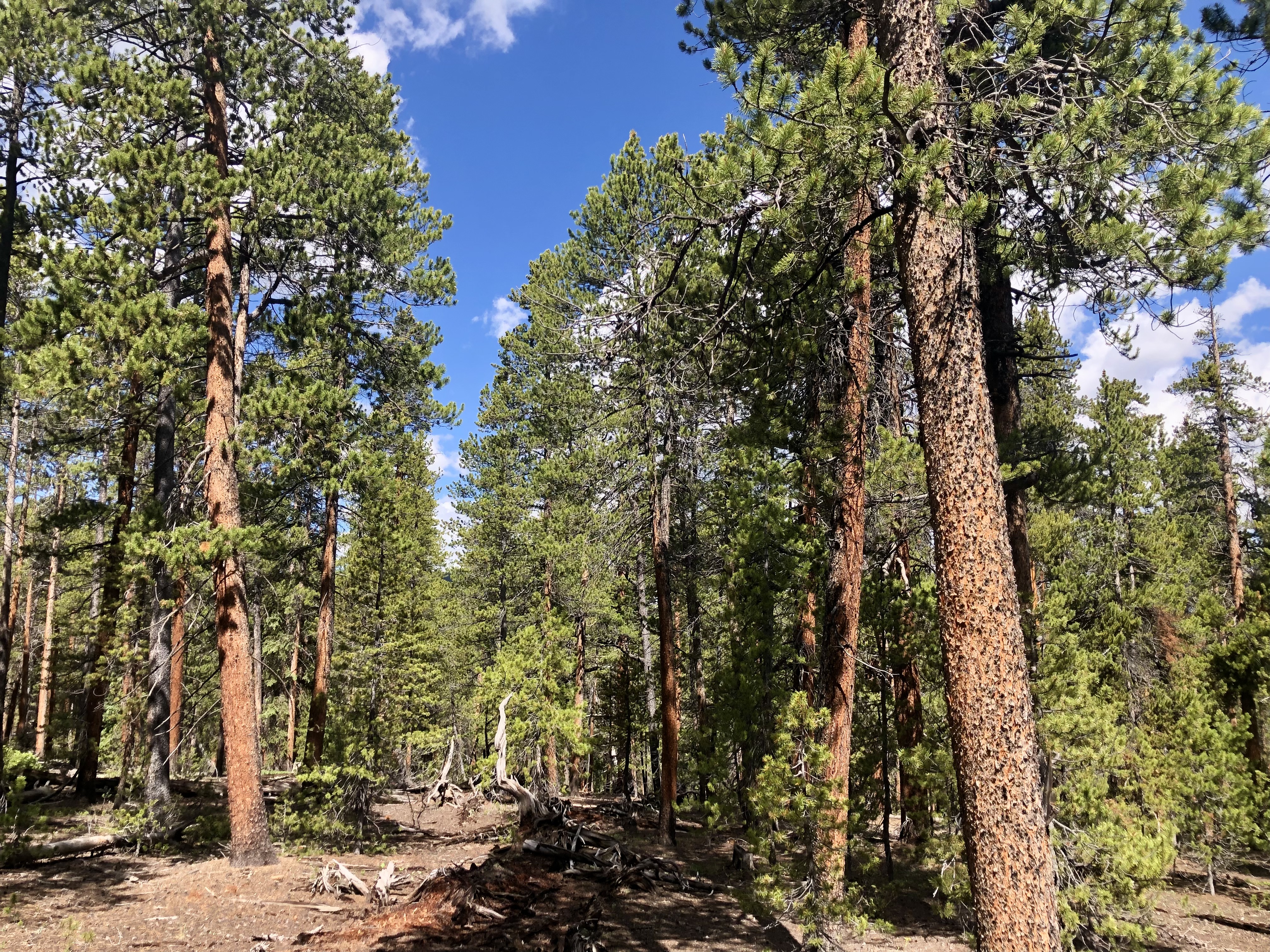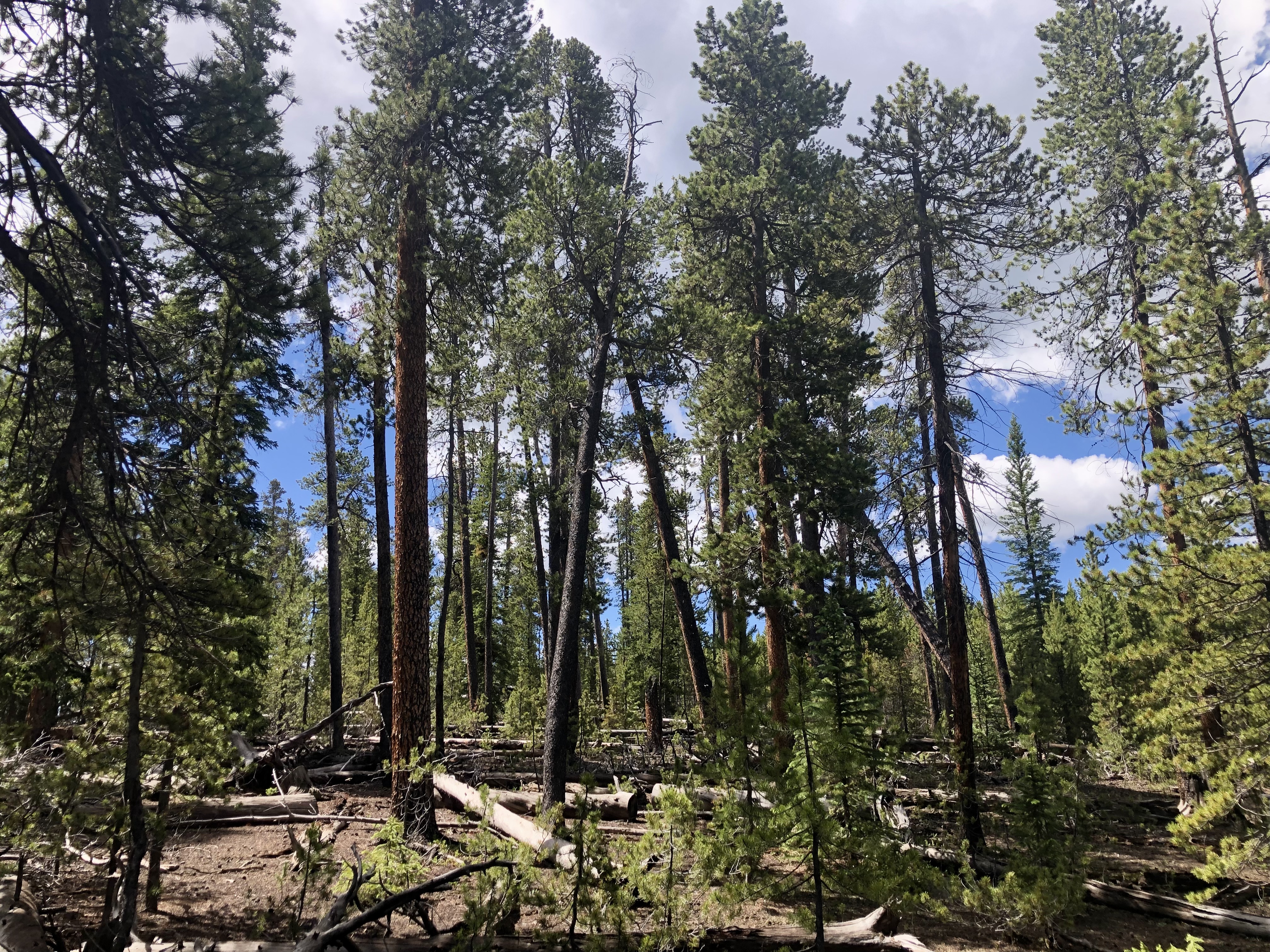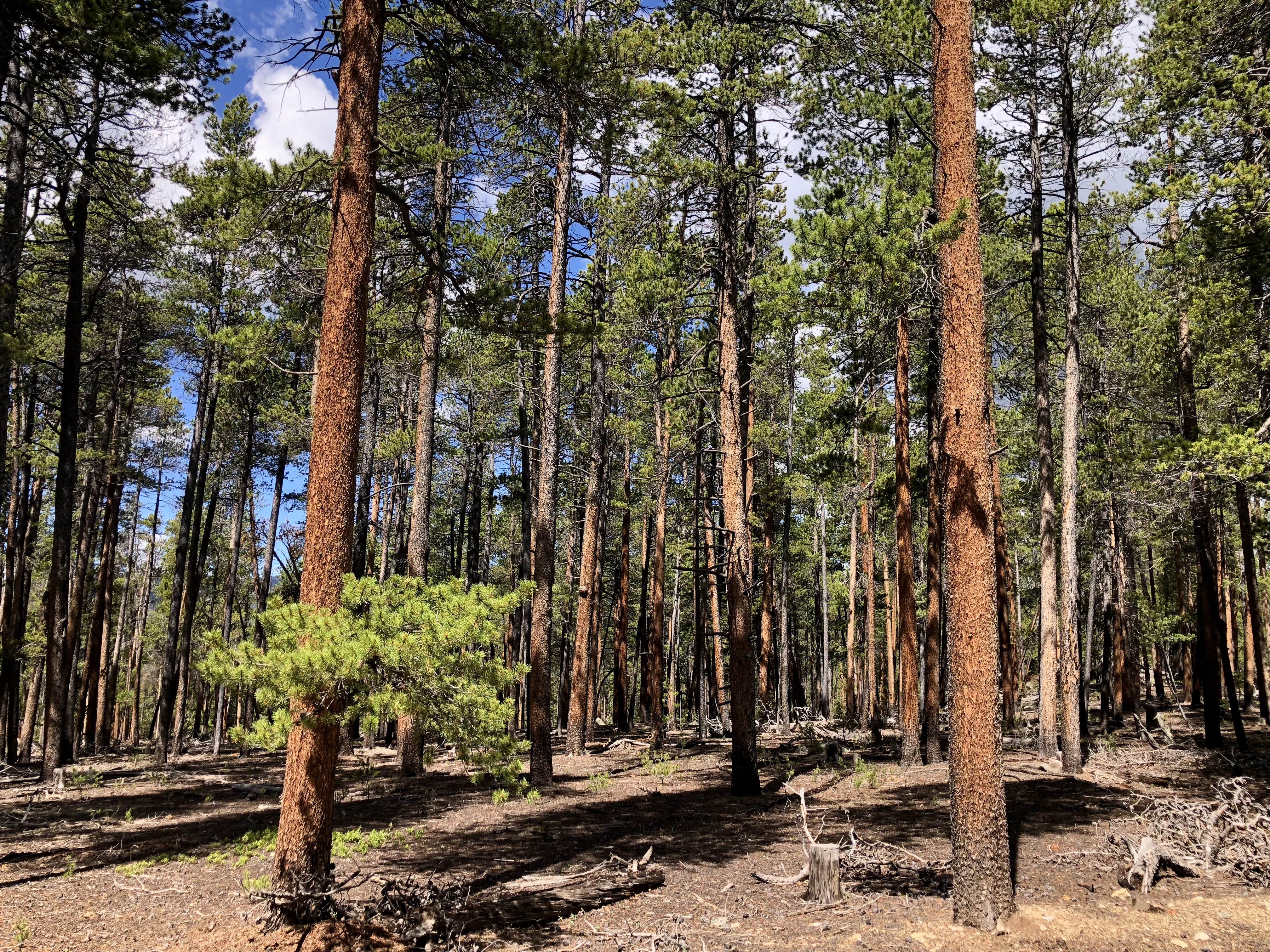The landscapes of Taylor Park provide a suite of important ecological values and ecosystem services, including biological diversity, wildlife, timber production, livestock grazing, recreation, carbon storage, and hydrological functions. A growing body of evidence highlights increasing forest vulnerability to changing climate and disturbance regimes. Accordingly, this area is subject to active, landscape-scale management intended to support forest resilience. Overarching management goals for the project include:
- Increase the forest’s ability to respond to multiple and interactive forest stressors including climate change, drought, insect attack, and/or disease
- Treat stands to improve forest health using commercial harvest, non-commercial, and prescribed fire treatments, as appropriate, to the site-specific situation
- Reduce fuels in the wildland-urban interface to allow for the facilitation of natural fire processes on the landscape
- Provide wood products for the local economy, which relies on wood fiber harvested sustainably from public lands
A team of natural resource specialists from Taylor Park, regional managers, and scientists came together for a three-day workshop in July 2022 to develop the study design for the ASCC project site. The team developed a set of Desired Future Condition statements, Objectives, and Tactics for each major climate adaptation trajectory. These three trajectories are briefly summarized below:
RESISTANCE

maintain relatively unchanged conditions over time
Management Goals:
- Retention of lodgepole pine on landscape
- Reduce stand density
- Reduce fuel continuity and ladder fuels
- Maintain or increase water holding capacity/snowpack
- Maintain Engelmann Spruce & Subalpine Fir for habitat diversity (goshawk habitat and nesting sites and snowshoe hare habitat)
- Resistance to aridification, low intensity fire, and mountain pine beetle
- Maintain access to roads for recreation & operation
- Maintain snags for wildlife / cavity nesting
- Protect heritage sites
- Commercial thin - crown thinning BA to open-up crown spacing
- Favor removal of large diameter trees with Dwarf Mistletoe
- Reduce surface fuel continuity
- Retain shading to increase snow water equivalent
- Sanitation thin
- Retain Engelmann spruce and subalpine fir component
- Retain 1-2 snags/acre
- Promote a diverse herbaceous composition
- Maintain CWD
RESILIENCE

allow some change in current conditions, but encourage eventual return to original conditions
Management Goals:
- Increase species, structural diversity, & spatial heterogeneity
- Maintain lodgepole pine as dominant species
- Prevent or reduce establishment of invasives
- Promote water storage and organic soil retention
- Increase resilience to fire and pest
- Retain some wildlife trees/character trees
- Maintain access to roads for recreation & operation
- Maintain Engelmann Spruce & Subalpine Fir to protect goshawk habitat and nesting sites
- Maintain snags for wildlife / cavity nesting
- Protect heritage sites
Strategies & Approaches:
- Variable density thinning (a.k.a 2-cut Group shelterwood)
- Seed cut; removal cut (20-40 yrs.)
- Reserves in clumps for wildlife E.g., spruce, legacy trees, snags, etc.
- 180-300/100 acres of 8” DBH or greater (1-3/ac)
- 1–5-acre gaps for snow retention; irregularity for edges (curved); 2 or 3 landings per unit based on skidding needs
- Density reduction throughout the matrix: 80-90 ft for tree length
- No harvest on existing spruce and fir
- Regenerate every 10-20 years
- Plant Douglas-fir (matrix & gaps), blister rust-resistant limber pine (gaps), Engelmann spruce - local seed (in gaps & matrix). Genotypes: Drought-tolerant southern seed sources (limber & Douglas-fir)
- Weeding around seedlings for establishment
- Utilize biocontrols for invasive plants
TRANSITION

actively facilitate change to encourage adaptive responses
Management Goals:
- Promote ecological conditions found in Cochetopa Park, a similar high-elevation basin located south of Gunnison, but which is drier and warmer
- As best as possible, simulate year 2100 projected conditions by 2050
- Transition away from a lodgepole pine dominated forest to lower-elevation, dry mixed conifer forest (maintain some lodgepole)
- Increase species, structural diversity, & spatial heterogeneity
- Create large 10-acre openings
- Promote aridification, heat, and fire-adapted species (native and novel)
- Prevent or reduce establishment of invasives
- Maintain access to roads for recreation & operation
- Maintain snags for wildlife / cavity nesting
- Protect heritage sites
Strategies & Approaches:
- Clearcut: Create 10-12.5 acre opening; whole tree skid and scatter throughout
- Site prep: Broadcast burn to prevent lodgepole pine establishment; if cannot burn, whole tree skid and weed
- Plant in openings and matrix
- Variable density thinning in matrix (80-100ft2/ac)
- Planting variety of species throughout, as appropriate across microsites: Douglas fir, blue spruce, ponderosa pine, limber pine, and bristlecone pine
- Use shade cards in openings based on species


